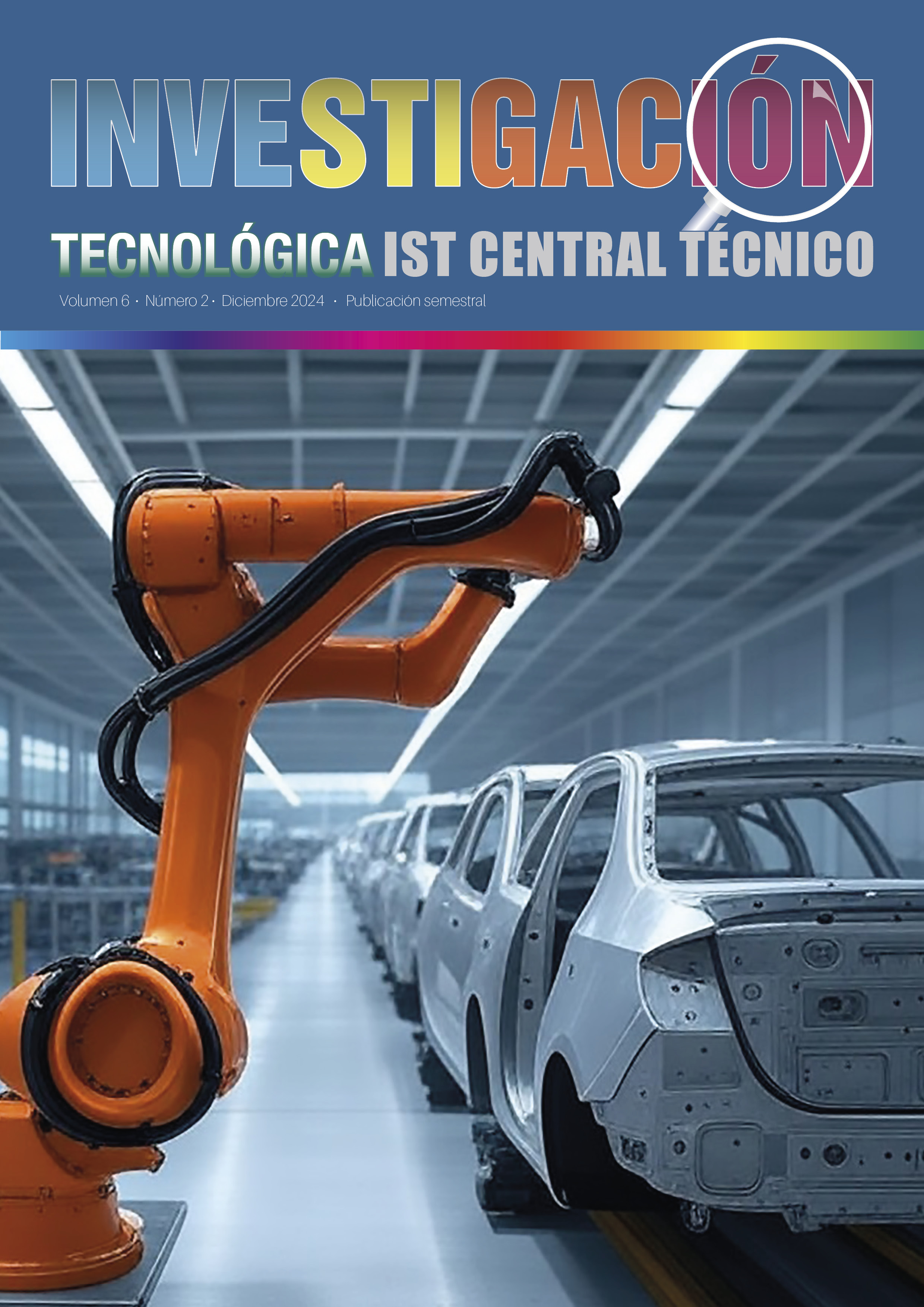Analysis of the elaboration process of biodegradable dishes with Ecuadorian leaves.
Análisis del proceso de elaboración de platos biodegradables mediante la utilización de hojas de plantas ecuatorianas.
DOI:
https://doi.org/10.70998/itistct.v6i2.180Keywords:
biodegradables; platos desechables; hojas de plantas; sostenibilidad; innovaciónAbstract
This study addresses the growing problem of disposable plastic consumption in the country, which represents 40% of total plastic waste and generates a significant environmental impact. In response to this situation, an innovation in the disposable packaging market is proposed through the production of biodegradable plates from leaves of native Ecuadorian plants. The research focuses on analyzing the production process of the plates: based on two techniques, the first one, using a conventional oven, within this process the sheets were disinfected, adhered with binder, we heated them and for the shape we used molds, the second using a thermoforming machine repeating the steps of disinfection and adherence, the molds were heated directly so that the material acquires the shape of the plates. The process with the thermoforming machine is optimal for the manufacture of plates with the desired characteristics, such as resistance and durability. The thermoforming process was optimized by adjusting the machinery and temperature parameters. The results showed that preheating at 65 C followed by thermoforming at 160°C was not optimal, the plate lost its shape and adherence due to the excessive drying process. A a different way of molding was tried, heating the sheets with the help of the thermoformer and drying them at room temperature, but the material lost its shape. Lately, it was selected a method that involved an initial drying at room temperature after disinfecting correctly. The mixture to obtain the biodegradable plate was the union of leaves, cardboard and binder to later apply a drying at room temperature inside the molds. This method allowed us to obtain more stable and durable plates. The most important axis considered is based on adjusting the temperatures and drying times to find the optimum point of humidity and resistance.
References
Villarroel, P., Gómez, C., Vera, C., & García, J. T. (2018). Almidón resistente: Características tecnológicas e intereses fisiológicos. Revista Chilena De Nutrición, 45(3), 271–278. https://doi.org/10.4067/s0717751820180004001.
Aragón, J. D. (2018, November 21). Tendencias en biodegradabilidad: el almidón de maíz y la caña de azúcar. Comercial Jimara. https://comercialjimara.es/tendencias-en- biodegradabilidad-el-almidon-de-maiz-y-la-cana- de-azucar/
Salvador, D. G. C. E. N. F. R. R. G. J. C. R. (n.d.). Una vida de plástico. Ciencia UNAM. https://ciencia.unam.mx/leer/766/una-vida-de- plástico.
Melo, M. F. (2023, May 24). El mundo está inundado de residuos plásticos. Statista Daily Data. https://es.statista.com/grafico/30051/produccion mundial-de-residuos-plasticos-por-tipo/
Roa, M. M. (2023, June 14). Colillas y envases, los residuos predominantes en las costas. Statista DailyData. https://es.statista.com/grafico/30193/objetos-de- basura-recogidos-con-mayor-frecuencia-en-las- costas-a-nivel-global/
Prime. (2022, August 31). Materiales biodegradables: qué son, para qué sirven y ejemplos. Primebiopolymers. https://primebiopol.com/materiales- biodegradables/
Guía de termoformado. (n.d.). Formlabs. https://formlabs.com/latam/blog/termoformado/
Gioffre, P., & Gioffre, P. (2023, November 5). Producción de envases biodegradables con Hojas de plantas Packaging Latam. https://packaginglatam.com/produccion-de- envases-biodegradables/
Ferreira, A. (2024, January 19). Calathea lutea o Bijao: Cuidados, propagación y plagas. Bio Space. https://www.biospace.es/calathea-lutea-bijao/

Downloads
Published
How to Cite
Issue
Section
License
Copyright (c) 2024 ALEJANDRO MALDONADO ARTEAGA

This work is licensed under a Creative Commons Attribution-NonCommercial 4.0 International License.
COPYRIGHT
The ISTCT Technological Research journal is an Open Access publication, whose contents are disseminated under a Creative Commons Attribution-Non-Commercial license (CC-BY NC 4.0 International). All articles published in the ISTCT Technological Research journal are published in Open Access and are available online for free immediately after publication.
This journal provides metadata for third-party indexing services through the open files initiative.
The ISTCT Technological Research journal recognizes and respects the moral rights of the authors, as well as the ownership of the patrimonial right, which will be transferred non-exclusively to the journal to allow its legal dissemination in Open Access.
The ISTCT Technological Research journal does not reserve the rights to publish articles. Authors may distribute their own material in any other medium or medium, as long as it is for non-commercial purposes, informing the editors that the work will be published again and giving the corresponding credit to the ISTCT Technological Research journal.
Authors can make other independent and additional contractual agreements for the distribution of the article published in this journal (e.g., include it in an institutional repository or publish it in a book) as long as they clearly indicate that the work was published for the first time in "ISTCT Technological Research Magazine". In the case of reproduction, a note similar to the following must be included:
"This text was originally published in REVISTA DE INVESTIGACIÓN TECNOLÓGICA ISTCT N ° -, section -----, number of pages, year of publication."
Authors are recommended to publish their work on the Internet (for example on institutional or personal pages) in the final version published by REVISTA DE INVESTIGACIÓN TECNOLÓGICA ISTCT, as it may lead to a greater and faster dissemination of the published work (see The Effect of Open Access).
The publications in this magazine, due to their free nature, do not entitle the authors to any financial remuneration.


